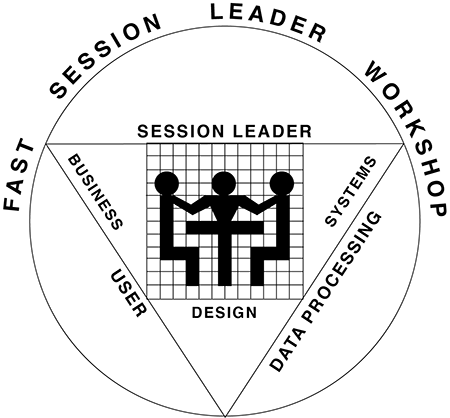August 2000

A Process for Deciding, Part 2 | Gary Rush Facilitation
Introduction
In my last article - "A Process for Deciding, Part 1", I outlined a better way to facilitate groups through a decision-making process. The process summary is:
- Revisit the Issue.
- Identify their Objectives.
- Return to the last point of agreement.
- Hear their reasons.
- Analyze their positions.
- Determine desired outcome:
- Majority Rule
- Delegate
- Recommend
- Consensus
- Step the group through the process to reach the desired outcome.
In this article, I focus on how to determine, then reach the desired outcome - especially Consensus.
The Desired Outcome
Given the assumption that the goal of a workshop is consensus, you may think this step is unnecessary. However, when decisions are difficult, this step becomes important. Groups do not always need or want to reach consensus. Ask the group what their desired outcome is. The desired outcome will be:
- Majority Rule
- Delegate
- Recommend
- Consensus
Review the following to help them determine the appropriate outcome.
- Time - consensus is perceived to take longer. Sometimes time is so short and the issue so complex that analyzing the positions may take longer than the time allotted. Assess this in conjunction with one of the other aspects below.
- Experience - how much experience or knowledge do the participants have? Do they have the where withal to make the decision? If not, you may have the wrong participants and they may only recommend or delegate.
- Authority - what has the group been delegated to do? Much the same as "Experience" above.
- Impact - the more important the decision i.e., the more people it affects or the greater the impact on the organization, the more important it is to reach consensus - it has greater commitment.
- Number of People - the larger the size of the group, the more difficult it is to reach consensus. It is not impossible (I once got a group of 90 people to reach consensus on a statement of direction for a business). It takes more time with more people.
- Environment - face-to-face workshops are easier for groups to reach consensus than teleconferenced workshops. It is more difficult to address tough issues when the people can't see each other well, read body language, or talk over each other.
- Complexity - the more complex, the more time is required to analyze the positions and find a solution.
Reaching the Desired Outcome - Consensus
Majority rule, delegate, or recommend are straightforward processes. Reaching consensus is more work. To reach consensus, do the following:
- Generate as many solutions as possible. Brainstorm or draw pictures to generate ideas.
- Discuss the list to ensure clarity and understanding of the solutions. Do not argue or look for agreement.
- Check to see if the group can decide now (they sometimes do).
Yes - document the decision and move to next problem.
No - use Prioritizing Process to select a solution.
After prioritizing, discuss the selected solution and check to see if they are satisfied.
Yes - document the decision and move to next problem.
No - return to their objectives (criteria needs to be based on the objectives and if they don't work, the objectives are not agreed to).
The keys to reaching consensus are:
- Generating lots of solutions.
- Defining clear, objective criteria.
Do not allow groups to stick with only two solutions - there are always more. Once they expand their solutions, the process helps them reach consensus - find a win-win solution.
Prioritizing Process
Do the following:
- Brainstorm evaluation criteria.
- Reduce list to between 5 to 10 criteria.
- Define each criterion clearly and ensure that each is measurable. Define a rating scale from 1 to 10 with "1" equaling poor performance and "10" equaling outstanding performance. Have the group define numbers to correspond to the "1" and "10".
Example (a criterion to select an auto): 0 - 60 mph from a standing stop on dry ground. The group defines the values for 1 and 10. Do not use subjective terms such as "slow" or "fast". In the example above, "1" may be ">= 20 seconds" and "10" may be "<= 6 seconds". "5" is midway between 1 and 10 (i.e., "13 seconds") - it is a linear scale.
- The group then scores each solution against the criteria.
- After scoring, the group defines a relative weight for each criterion on a scale from 1 to 5. "1" is low value and "5" is high value. More than one criterion may have the same weight, though all of the criteria may not have the same weight.
- Multiply the weight times the score to determine the weighted score (in the example, if that criterion had a score of 6 and a weight of 3, the weighted score would be 18).
- Add the weighted scores. The solution with the highest score is the selected solution.
Prioritizing requires clear, measurable criteria. Take the time to define them clearly - it makes prioritizing and reaching consensus much easier. ![]()

